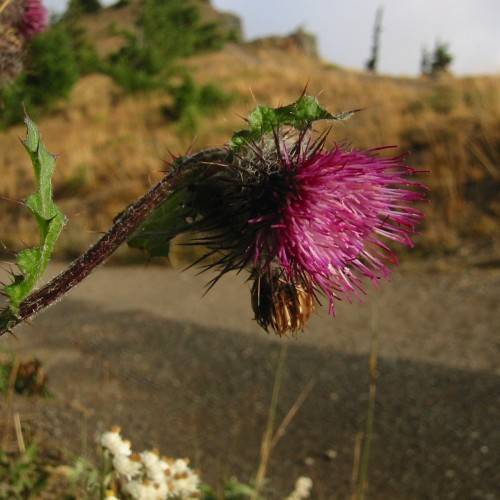
Edible Thistle
Cirsium edule var. macounii
Watering:
Frequent
Hardiness Zone:
Sun:
full sun,part shade
Fruits:
Fruits Ready In
Leaf:
Yes
Growth Rate:
Low
Drought Tolerant:
Yes
Salt Tolerant:
Yes
Care Level:
Medium
watering
Edible Thistle should be watered moderately, usually once or twice a week. It's important not to overwater, as this can lead to root rot. Water the soil deeply to ensure the entire root system is moist. During periods of hot weather, the plant may need more frequent or larger amounts of water. Edible Thistle prefers evenly moist soil that is fast draining. Make sure to water in the early morning or late afternoon to allow the foliage to dry before nightfall which can help prevent plant diseases.
sunlight
Edible Thistle (Cirsium edule var. macounii) prefers bright, direct sunlight for 6 to 8 hours a day in order to thrive. This plant species is a perennial that grows best when it receives full sunlight with temperatures between 50 and 80 degrees Fahrenheit. During the spring and summer, Edible Thistle should get at least 6-8 hours of sunlight each day, and during the winter it should receive 4-5 hours of direct sunlight each day. The best time of the day for this plant species to receive its sunlight is from late morning to early afternoon, when the sun is at its peak intensity. It is important to provide adequate sunlight as this species is not tolerant of too much shade.
pruning
Edible Thistle (Cirsium edule var. macounii) should be pruned in late winter to early spring, just before new growth begins. Pruning should be done carefully to avoid cutting off the flower buds, which will ruin the blooms. Remove any dead or damaged branches, then thin out the bush by cutting back some of the branches, as well as shaping and providing an overall better appearance. Prune the plant down to the desired size, but take care not to cut too far back or it may be difficult to get it back to its normal size. After pruning, it is recommended to apply fertilizer and mulch to help encourage vigorous and healthy new growth.
